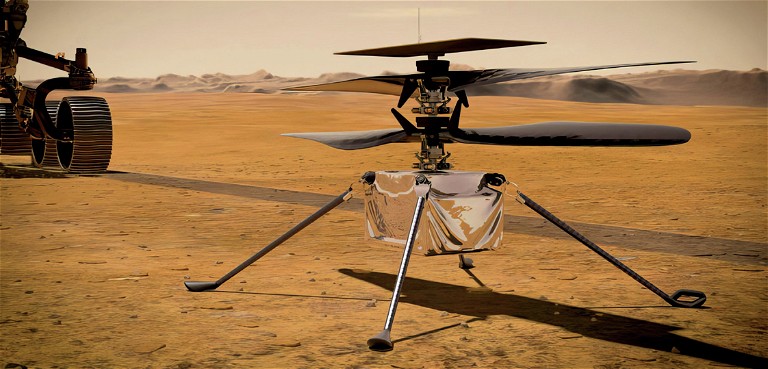Apologies for interrupting your experience.
This publication is currently being maintained by the Magloft team. Learn more about the technology behind this publication.
Manage your subscription to this publication here or please contact the publisher Test Publication for an update.
Mission-critical info for uncrewed systems professionals

Ingenuity is now 23 Earth months beyond its expected lifetime
Mars’copter reaches 50
Space vehicles
NASAs Ingenuity Mars Helicopter has completed its 50th flight on the Red Planet (writes Nick Flaherty).
The craft was intended as a technology demonstrator using smartphone components that would fly only five times after landing with the Perseverance rover 2 years ago. It has now flown for more than 89 minutes and more than 7.1 miles (11.6 km). Since leaving the relatively flat confines of Jezero Crater’s floor on 19 January, Ingenuity has flown 11 times, setting a new speed record of 6.5 m/s.
Each flight covers new ground, and the images from the helicopter have shown how an uncrewed aircraft could serve as a forward scout for future planetary expeditions.
By testing the helicopter’s limits, engineers are gathering flight data that can be used by those working on designs for possible future Mars helicopters. This includes multiple sample recovery helicopters for the proposed Mars Sample Return project.
The Martian winter and regional dust storms can block the helicopter’s photovoltaic panel, so the base station on Perseverance needs to search for the rotorcraft’s signal each morning at the time Ingenuity is predicted to wake up. When the helicopter does fly, it has to navigate over rugged and uncharted terrain, landing in spots that can be surrounded by hazards.
“We’re flying over the dried-up remnants of an ancient river that is filled with sand dunes, boulders and rocks, and surrounded by hills that could have us for lunch,” said Josh Anderson,
Ingenuity operations lead at NASA’s Jet Propulsion Laboratory (JPL).
“And while we recently upgraded the onboard navigation software to help determine safe airfields, every flight is still a white-knuckler.”
The engineers plan to fly Ingenuity more often, as the helicopter needs to remain within electronic range of the rover. The rover’s auto navigation capability means it can travel hundreds of metres each day, and the helicopter has to be able to keep up with it.
“Ingenuity relies on Perseverance to act as a comms relay between it and the mission controllers here at JPL,” said Anderson. “If the rover gets too far ahead or disappears behind a hill, we could lose comms, so it’s imperative that Ingenuity keeps up and is in the lead whenever possible.”
Uncrewed Systems Technology
Providing independent coverage of the engineering of uncrewed systems
Social Footprints
Follow us on our Social Media Channels